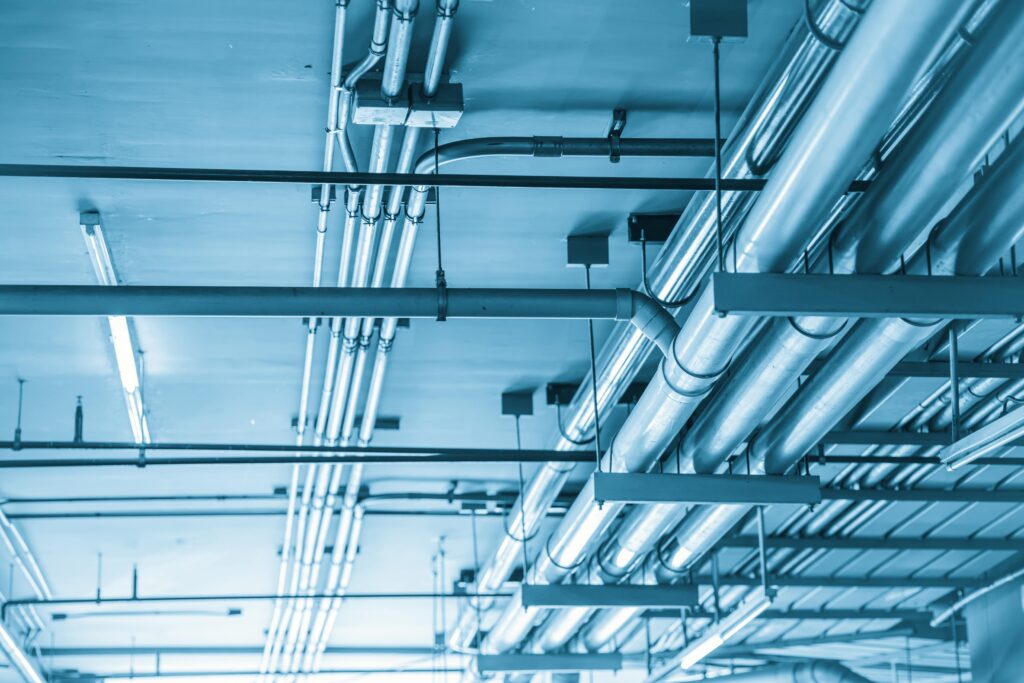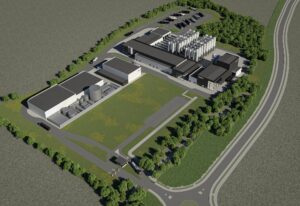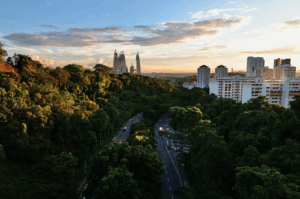Water is one of the most valuable resources in urban infrastructure, shaping how cities grow and adapt to evolving environmental conditions. As rainfall patterns shift and extreme weather events become more frequent, the need for more innovative, more resilient water management solutions is increasing. Modern systems such as rainwater harvesting, siphonic drainage, and blue roofing offer sustainable ways to capture, store, and reuse rainwater while reducing reliance on external supplies. When combined with smart technologies, these solutions create data-driven water networks that optimise efficiency, support flood prevention, and improve long-term adaptability. By embedding these innovations into project planning, urban developments can build infrastructure that is both sustainable and future-ready.
Maximising Water Efficiency Through Rainwater Harvesting
Embedding these innovations begins with rainwater harvesting, which plays a central role in reducing strain on municipal water supplies while improving resilience to changing weather patterns. Projects can significantly enhance water efficiency by repurposing collected rainwater for non-potable uses such as irrigation, cooling, and sanitation. In urban environments, where impermeable surfaces limit natural absorption, rainwater harvesting helps regulate runoff, preventing excessive strain on public infrastructure. Without effective collection and management, rainfall can quickly overwhelm drainage systems, increasing the risk of flooding. By incorporating these systems into initial design stages, developments can optimise rainwater use, limiting waste and ensuring a more sustainable approach to urban water management.
To further enhance system performance, climate-responsive modelling allows engineers to refine rainwater harvesting strategies based on projected rainfall trends. By integrating these insights early in the design process, storage and distribution networks can be optimised for future conditions. This level of planning ensures that harvested rainwater is collected efficiently and distributed in ways that maximise sustainability. As climate change accelerates, such predictive tools will be essential in reducing maintenance costs and environmental impact while improving the adaptability of water management systems. A forward-thinking approach ensures that cities remain prepared for shifting rainfall patterns and growing water demands, reinforcing the importance of efficient rainwater harvesting.
Optimising Drainage Through Siphonic and Blue Roof Systems
Improving rainwater collection alone, however, is insufficient, with efficient drainage equally important to ensuring long-term system effectiveness. Siphonic drainage serves as an ideal solution here, complementing rainwater harvesting by enhancing the speed and efficiency of water movement. Unlike traditional gravity-based drainage, which requires extensive underground pipe networks, siphonic systems use negative pressure to create a vacuum effect, allowing rainwater to be transported quickly and efficiently. This approach eliminates the need for sizeable underground infrastructure while preventing local drainage systems from becoming overwhelmed.
If you’re weighing approaches for a large roof, our explainer on siphonic vs traditional drainage sets out how flow behaviour, outlet counts and routing differ—and why full-bore siphonic flow changes coordination.
By directing harvested rainwater to where it is needed most, siphonic drainage helps projects maximise resource efficiency and improve sustainability, ensuring that every drop of water is utilised effectively within the built environment.
In doing so, drainage solutions must also account for extreme weather events, particularly in densely built environments where sudden downpours can lead to surface flooding. Blue roofing systems address this challenge by temporarily storing rainwater on rooftops before gradually releasing it into drainage networks. Blue roofs help cities better manage stormwater runoff while integrating seamlessly with other water conservation strategies by controlling the rate at which water enters the system. With climate patterns shifting, these solutions offer adaptable flood prevention measures that enhance both sustainability and resilience. As urban developments continue to expand, incorporating blue roofs alongside siphonic drainage ensures that infrastructure can withstand increasingly unpredictable rainfall, safeguarding both buildings and the communities they serve.
Smart Technologies: Enhancing Adaptability and Efficiency
Integrating blue roofs and other water management systems into urban infrastructure becomes even more effective when paired with smart technologies. With digital solutions capable of providing real-time monitoring, predictive modelling, and automated system adjustments, ensuring that water is directed and stored in the most efficient manner. These advancements reduce reliance on manual intervention and improve long-term sustainability by ensuring that water resources are used as effectively as possible. By integrating smart technology, urban projects can create adaptive water systems that respond dynamically to real-time weather conditions, making them far more efficient and resilient in climate uncertainty.
Case in point, 3D coordination and climate-responsive modelling enable engineers to optimise drainage pathways and storage capacity based on projected rainfall patterns. This ensures that water management solutions remain effective even as environmental conditions shift. By reducing material use, lowering costs, and improving system reliability, smart technologies help create an infrastructure that can evolve alongside changing climate conditions, reinforcing resilience in urban planning. When combined with blue roofs, siphonic drainage, and rainwater harvesting, these digital advancements form a comprehensive water management network that optimises performance, reduces waste, and maximises efficiency.
For a joined-up view of smart rainwater management, see how we pair early planning with reuse and controls to cut mains demand across complex estates.
Building for the Future: The Need for Proactive Planning
Needless to say, not all of these solutions will be appropriate for every project. Selecting the right water management system requires considering project scale, space constraints, and site-specific requirements. Large developments may require extensive storage and distribution networks, while urban projects must navigate limited space. In any event, however, selecting the solution that’s right for you and integrating it effectively has the potential to unnecessarily increase costs and cause logistical challenges without careful planning.
Early-stage coordination is, therefore, crucial to ensuring that these challenges are addressed before construction begins, allowing water management strategies to align with long-term sustainability goals. With shifting rainfall patterns and increasing urbanisation, forward-thinking planning will enable developments to integrate efficient, scalable solutions that can evolve alongside changing environmental demands. As climate variability accelerates, prioritising adaptable, data-driven solutions will be essential in safeguarding infrastructure and mitigating the risks posed by extreme weather events. By investing in proactive design strategies, projects can reduce long-term costs, minimise environmental impact, and ensure that water systems remain effective, even as conditions change.
How Capcon Delivers Industry-Leading Solutions
Addressing these evolving challenges naturally requires expertise in custom water management solutions. Having worked across a wide range of infrastructure projects to develop strategies tailored to each client’s needs, Capcon combines technical precision with an adaptable, problem-solving approach to deliver effective, site-specific solutions. The company remains flexible in its approach, ensuring that water management strategies are efficient, scalable, and well-integrated with existing infrastructure, whether designing systems for large commercial developments or urban projects with tight spatial constraints. In every event, Capcon applies in-depth industry knowledge and advanced modelling techniques to optimise resource efficiency while supporting long-term sustainability, even as urban environments evolve. Ultimately, this enables Capcon to continue to lead the way in delivering solutions that support long-term infrastructure sustainability.







